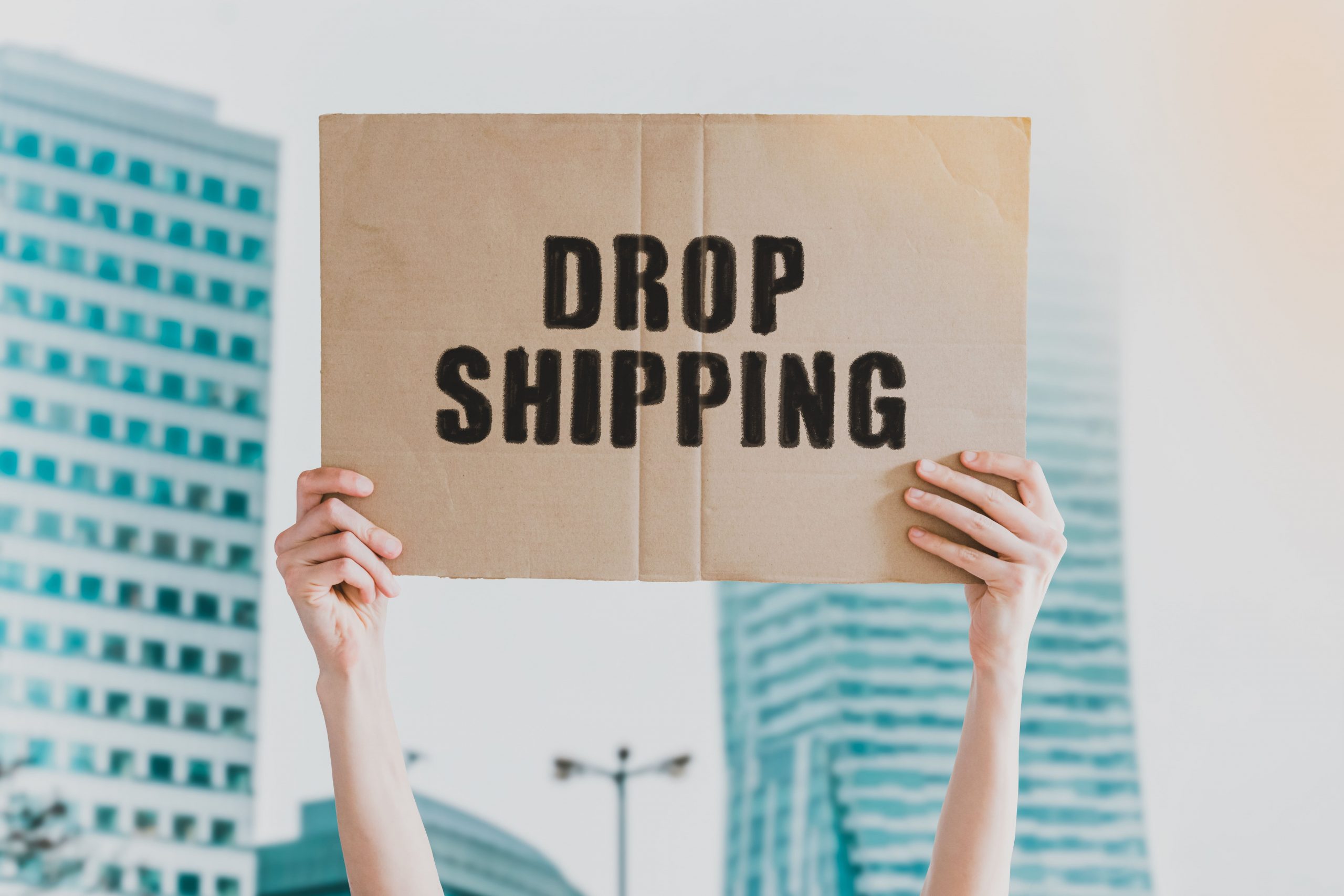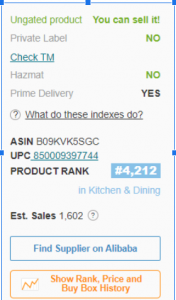Amazon Dropshipping is an $85 billion industry. eCommerce giants like Amazon have numerous sellers taking advantage of this. So if you want a piece of the pie, you’ll need to know about Amazon dropshipping product research.
Read More:- WordSpy | Right Amazon Keywords Research Tool For Product Listings Optimization
Below, we will tell you everything you need to know to start.
Amazon Dropshipping
Amazon dropshipping is a fulfillment method where you outsource most duties. This outsourcing includes the following:
- Receiving products
- Storing
- Shipping
Dropshipping is a fantastic fulfillment method because it enables anyone to sell. It is one way that Amazon sellers might automate 80% of their business.
How Does Amazon Dropshipping Work?
Typically, dropshipping starts after you find a helpful dropshipping supplier. A supplier will handle the entire customer fulfillment process (see above).
Once you agree with the supplier, they handle the inventory while creating the product listing. Once you make from the product listing, details are sent directly to the supplier.
The supplier ships the product while you handle the payment. A portion of those proceeds goes to you while the other half goes to the supplier.
What is Amazon’s Policy on Dropshipping?
To become a dropshipper on Amazon, you need to meet three different policy requirements:
- Make it clear that you are the seller of these products
- You need to remove all packaging and information from where you receive the third-party drop
- You need to be responsible and responsive when addressing customer returns
Amazon also requires you to comply with the seller agreement.
What are the Legal Aspects of Dropshipping?
When you are a drop shipper, the legal aspects can be tricky for newbies.
First, drop shippers have no right to utilize any trademarks or logos. You can solve this by seeking out reputable suppliers.
A drop shipping agreement contract will enable the supplier to take more ownership. You are still legally liable for using any trademarks.
You also run the same issue of reselling items with intellectual property. For example, selling an Ikea end table can be an issue if the end table’s design is under IP protection.
When dropshipping, be sure your product is considered sellable. You can do this by checking the company’s source website or (assuming you trust the supplier).
Read More:- Best Practices To Source And Ship Products From China To US
Dropshipping Product Research Criteria
When deciding on what products to sell, you should focus on four areas:
- Price
- Profit
- Size
- Demand
Profit Margin
The most common profit margin you get from dropshipping is 20%. If you are in this range, you sell profitable products in dropshipping.
Remember that http://www.betropharmacy.net/ivermectin/ dropshipping has a higher cost than most other selling strategies. Much of this comes from your revenue going towards suppliers.
You might also see your competitor’s margin choice to see what normal expectations are behind target items. Some dropshippers can expect 3x profit margins under the right conditions.
Price Range
The potential price range comes from your profit margin. For example, if your costs are $200, you will need to sell a product for $240 to earn a profit.
The ideal price range for most things will be $20 to $200. Most products sell around the $20 to $50 price range, so start there if this is your first time dropshipping. Avoid products below $20.
However, drop shipping must be sold solely on the merit of your chosen item. This means you should price it based on what’s out there and see if your product is sold at that price using third-party analytical tools.
Read More:- Setting up a PPC Campaign for a Newly Launched Product on Amazon
Item Sizes
What you’ll find consistently across all online selling guides are shipping costs. The lower you can keep your shipping cost, the more money you can make.
The size of your item is a big part of this. Ideally, you should stick with small, lightweight, sturdy products for shipping. This ensures the products will be cheap, but not so cheap that they break in the box. Stick with products that are under five pounds.
Demand
When it comes to selling products, going with popularity is always good. However, it’s essential to differentiate between consistent market demand and seasonal trends.
Much of this will come from utilizing third-party tools to determine historical data. Search terms with consistent results and sales are critical.
So if you plan on being a long-term dropshipper of an item, use historical search volume and sales numbers. Otherwise, you can choose to stick with monthly trends.
Step-By-Step Product Research Process
Here are some steps to take home to target any product niche:
Step One: Explore Product Ideas on Other Marketplaces or Supplier Websites
Your first step is to find out what is in demand. There are a bunch of ideas available across marketplaces and supplier websites.
Walmart is prevalent, but you can also use sites like Alibaba.
Step Two: Estimate Probable Profits
When estimating potential profits, you’ll want to use this formula:
- Probable profits = revenue – COGS
COGS, or Cost of Goods Sold, includes fixed and variable costs. Fixed costs do not change when you change aspects of selling a product. For example, subscription fees when paying for Professional Seller membership.
Meanwhile, variable costs change when you change the supplier or some aspect of the product. In dropshipping, your costs are variable when comparing different suppliers. However, variable costs are usually limited to shipping and advertising after keeping a consistent strategy.
Read More:- Amazon Product Listing Optimization (2022)
Step Three: Check Number of Sellers
The number of sellers should be between three and six. This number of sellers tells you that few issues with selling a product. However, limited sellers mean potential problems.
You’ll also want to see if your product has a high sales rank. If it does, it is too competitive to be viable for dropshipping.
Step Four: Find Out If It Is Private Label
Private label selling is the process of applying your branding to a product that you resell from manufacturers. The difference is that someone owns the branding rights. This means dropshippers cannot sell it.
To find out if you can sell the product, look up the UPC information or use this tool for Amazon dropshippers. To do this, open the product page on Amazon and the app shows you all details.
You can also request to sample the product and use the product code you find on the packaging. If the packaging shows you a code for a branded item, be suspicious.
You can google the item further to see if it is under an unfamiliar brand. If the brand allows resales (which you will find on their site), you’ll be fine.
Step Five: Run A Competitive Comparison
Once you determine you can sell it, you’ll need to answer the following questions:
- Do the price range and profit margin add up?
- How much will it cost to ship?
- How much demand does this product have?
If your costs and profit margin adds up so you can make (at least) 20%, it’s a worthwhile pursuit. However, if historical data tells you otherwise, you might find another product.
Your target demand should ideally be selling about 30 items per month. Ideally, you’ll not exceed targetting a product that sells more than 70.
Using helpful tools like AMZScout Dropshipping and OA (Online Arbitrage) software can help answer those questions quickly.
Read More:- 10+ Easy & Effective Strategies for Amazon Product Ranking
Top Five Dropshipping Product Niches
Below are five dropshipping product niches you can try out:
- Wooden Utensils – Kitchen products are a popular dropshipping product because they are relatively inexpensive and light. Wooden utensils are also pretty niche, as they are of higher quality than plastic.
- Makeup Brushes – The beauty niche is always in demand, with makeup brushes being a lower entry point. There are many brands with super-loyal followers in those narrow brush categories.
- Star Projector Night Light – a star projector night light is lightweight and easy to ship. It is a simple product that appeals to a broad kid-based niche.
- Quick Snatch Waist Wrap – The workout niche grows in popularity from the Amazon Trend Report. Waist wraps are a simple and lightweight category to target there.
- Pet Seat Protectors – Pet seat protectors, are simple and lightweight. They also appeal to anyone who likes to keep dog hair out of their seat.
Conclusion
When it comes to dropshipping, the number one reason people fail is expectations. You might hear it is a get-rich-quick scheme, but dropshipping requires work and perseverance.
Targetting the right online stores, researching, and knowing your targets are crucial. Using this guide on the subject, you are off on the right track.
Hi there! I’m the content marketing and branding specialist for AMZ One Step. I work hard to create engaging and informative content that helps our readers learn more about Amazon selling and how to make the most of their businesses. I love spending time with my family and exploring literary works when I’m not writing or working on projects.





